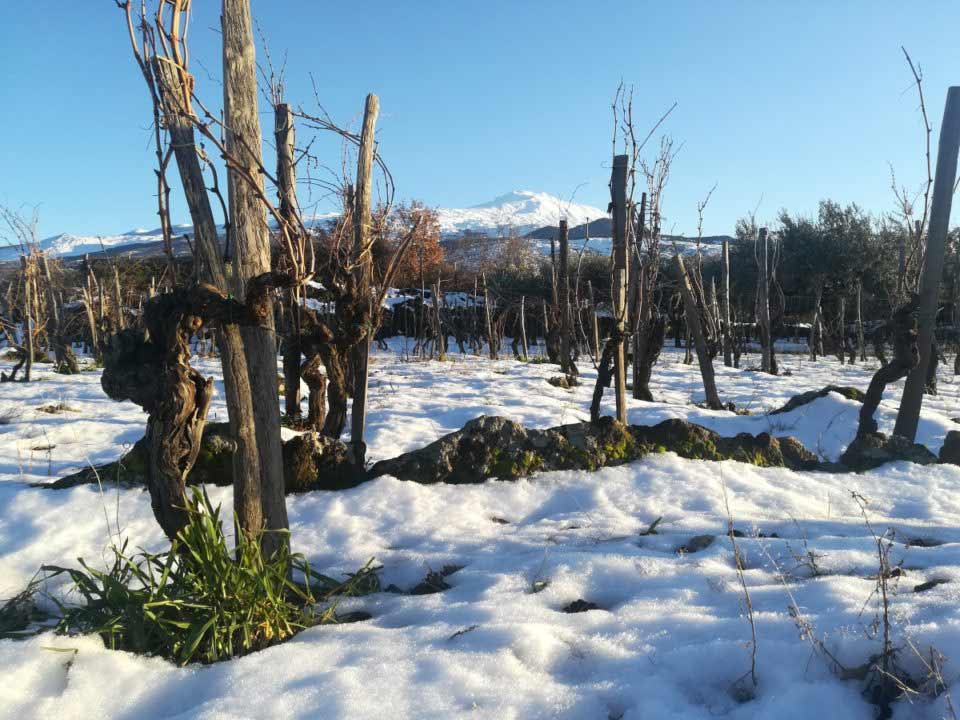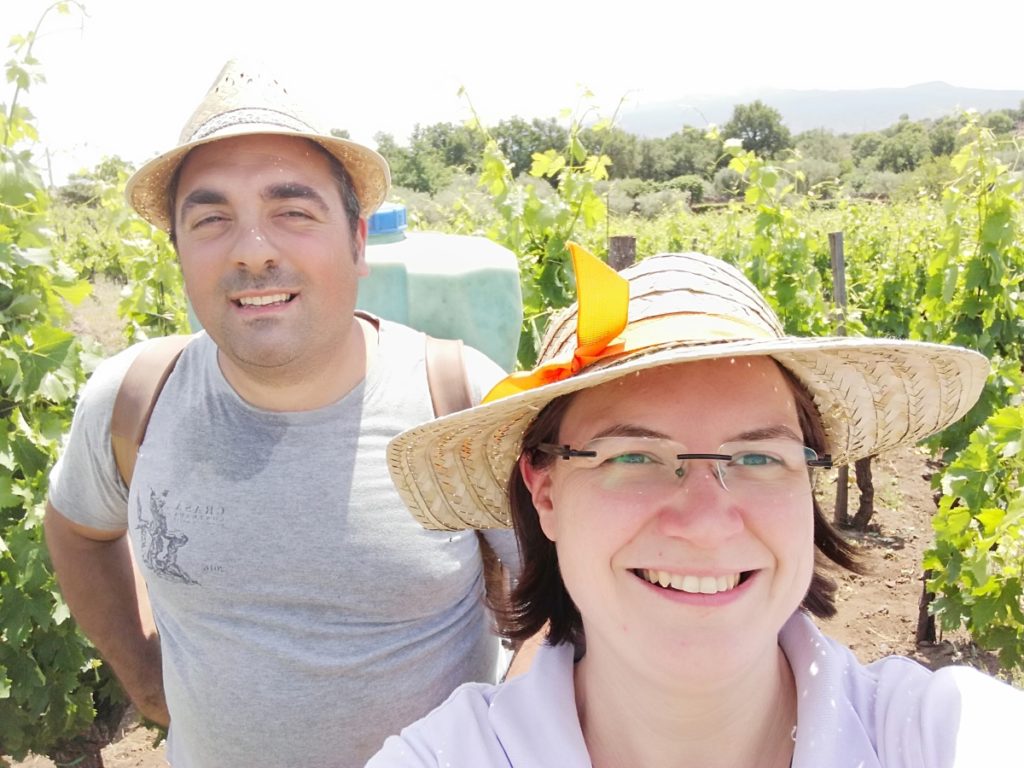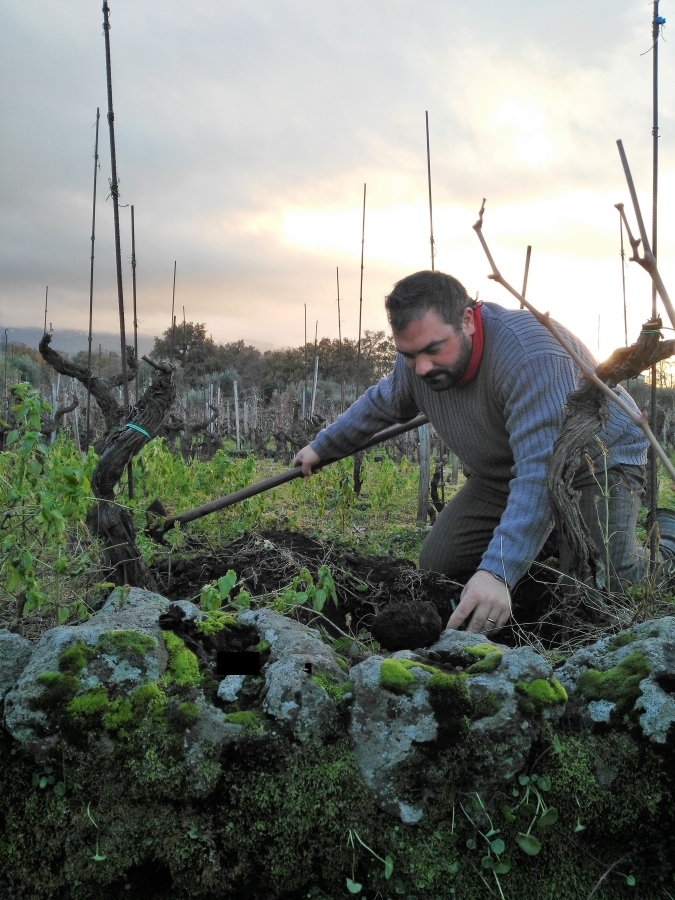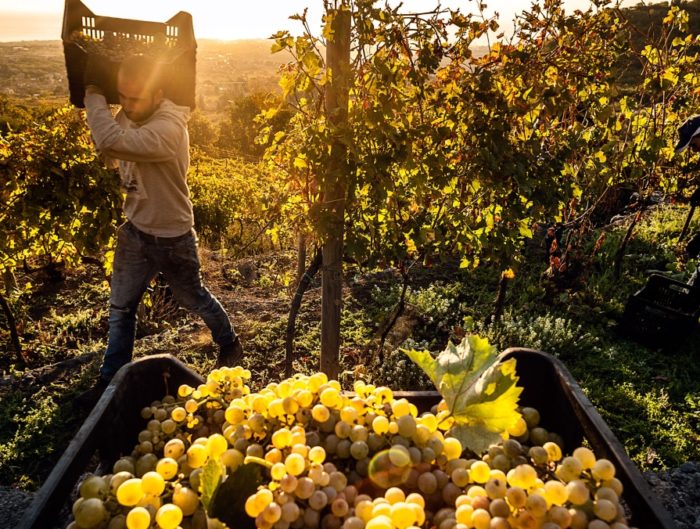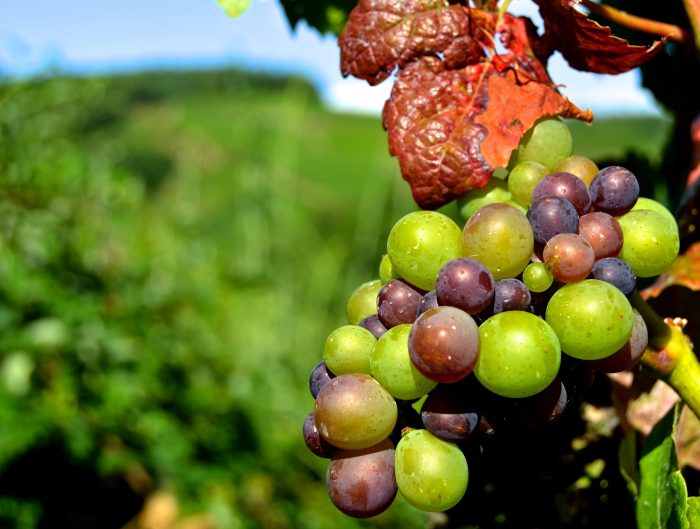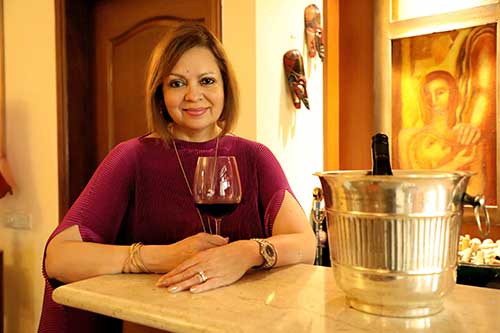Trend-spotting series I: Wines of Mount Etna
Occasionally, there comes a trend that becomes more than just a trend. The growing appreciation for the wines of Mount Etna in Sicily, the large island south of Italy, is one such, with the last twenty years seeing a deepening appreciation for its wines made from unique indigenous grapes grown in the rich volcanic soils of an active volcano.
In this article, I explore the typical viticulture and winemaking of Etna DOC, an appellation in Sicily that has rapidly become a favourite of wine lovers and experts alike, featuring in top restaurant wine lists around the world.This is based on the story of one of the region’s winemakers.
The volcanic wines of Sicily’s Mount Etna
To understand what makes the wines of Etna so unique today, it is necessary to dip into its past.
Winemaking in Sicily is no modern phenomenon, tracing back to the Greeks who brought their viticultural and winemaking practises to the land in the 8th century BC or even before.
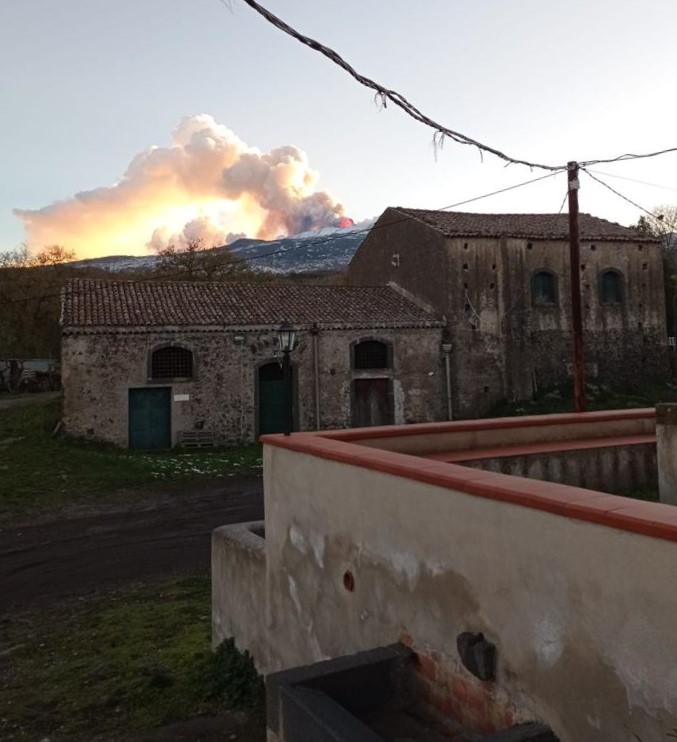
Always known for its temperate, sunny climate and ability to produce plentiful quantities of ripe grapes, its transition into a region known for its bulk production of wine and must was the natural next step. These bulk wines were then shipped to cooler regions in Europe to add body and structure to wines made there. Ergo, while quantities of wines produced were large, quality was never a prime focus.
This began to change in the the 1980s when the family estate of Planeta, along with major producers like Donafugata and Tasca d’Almerita re-focused attention on Sicily by producing a range of wines made to high standards from international grape varieties. Over time and aided by subsidies from the European Union, Sicilian wine established itself, and the focus shifted to better quality and its range of unique varieties including Nero d’Avola (black) and Grillo (white).
Enter the wines of Etna DOC, the appellation based on the slopes of Mount Etna. Here, Nerello Mascalese (the hero grape of the region, often compared to Nebbiolo for its pale colour, high acidity and distinct tannins), Frappato, Nerello Cappuccio, Carricante (a high acid, ageworthy white) and Cataratto among others, grow at heights up to 1300 metres above sea level on a variety of diverse rich dark lava flow soils. There is strong sunshine reflecting off the Mediterranean Sea which is moderated by altitude, enabling excellent ripening of grapes and concentration of flavours. The climate is Mediterranean, with adequate rainfall for viticulture – about 1000 mm mainly in autumn and winter. Viticultural areas are divided into terroir-specific sites (akin to the climats of Burgundy) known as contrade, of which there are approximately 140. The layers of lava over the years have created a mosaic of unique terroirs so no single contrada is like the other.
Already, you can see why Etna’s vineyards differ from others around Sicily or indeed, mainland Italy.
The story of the family Vecchio
There are already several notable producers making wines in Etna DOC. (see footnote). For this article, I am focusing on the story of Carmelo and Rosa Vecchio, small producers with strong ties to the land who produce about 12,000 bottles annually under the label of Vigneti Vecchio. Over Zoom, Rosa explains their story to me. “My husband, Carmelo, has lived here for many generations – working for land-owning noblemen for centuries as sharecroppers and labour lenders – and only from the 1970s as landowners. In 1970, in fact, the noble Camarda family decided to sell the great fief of Carranchello near the Verzella hamlet of the municipality of Castiglione di Sicilia, which Carmelo Vecchio (grandfather and namesake of the current owner Carmelo) bought.” In 1997, Carmelo’s grandfather died and the land was divided within the family. “It was a little piece of land with plenty of biodiversities – olive trees, fruit trees, vegetable gardens – and a palmento. The wine made here was sold in bulk to other parts of Europe.”
Late into the last century many of Etna’s vineyards were abandoned as farmers migrated to the cities to make an easier livelihood. But the Vecchio family stayed on, working the land, making their wine.

Carmelo and Rosa 
Carmelo Vecchio in his vineyards
But this wine was not the wine the Vecchios make today. Rosa explained, “Because Sicilian wine was always sold in bulk and used for blending, to give body, structure, and alcohol to the noblest wines of northern Italy and Europe, there have always been many good grape growers but no local winemakers. The farmer’s work, therefore, ended at the palmento, where our grapes were crushed, de-stemmed in our beautiful lava-stone millstones, the must then loaded onto special wagons and taken to the port of Etna where it was loaded onto the ships to send onwards. In fact, Nerello Mascalese produces a very clear must with a high alcohol content that is well suited to long journeys by sea.”
The last few decades have seen a handful of intrepid winemakers brave the altitude and lava ash (the last eruption was as recent as March 2021) in order to plant grapes to make their own unique expressions of Etna wines. However, the gamechanger for Carmelo was his winemaking experience of 18 years with pioneering winemaker Andrea Franchetti, who made wines at Passopisciaro. In 2016, the Vecchios decided to branch out and make wine from their own plots of old vines (some as old as 120 years), setting up a small winery in their garage in Solicchiata in the town of Castiglione di Sicilia. Their grapes are hand-harvested, made using ambient yeast and without fining or filtering. The wine is fermented in 500-litre older barrels.
“The aim was to vinify and bottle our grapes, producing a wine that is a personal and unique expression of Etna from the vineyard to the bottling,” Rosa tells me, “We decided we wanted to work this way, focusing on the unique terroir of each parcel.” The work is far from easy, as their vineyards are fragmented due to the topography of the region – the biggest being two hectares. Work in the vineyards is entirely by hand, as is harvest.
The Vecchios currently make four wines: Sciare Vive Rosso (about 5000 bottles), Sciare Vive Bianco (about 4000 bottles), Donna Bianca (about 1000 bottles), Contrada Crasà (about 2000 bottles). The interest in white Etna wine (Bianco) is a recent phenomenon, adds Rosa, only about 20 years or so. The Vecchios planted their own white grapes as recently as 2019, buying in prior to that. While the region has always grown white grapes varieties (Carricante, Catarratto, Minnella, Grecanico, Inzolia) and there are many old vines in the area, these have been traditionally used to blend (5 to 10%) in Etna Rosso (red) and not to make white blends or varietal wines, as is done now.
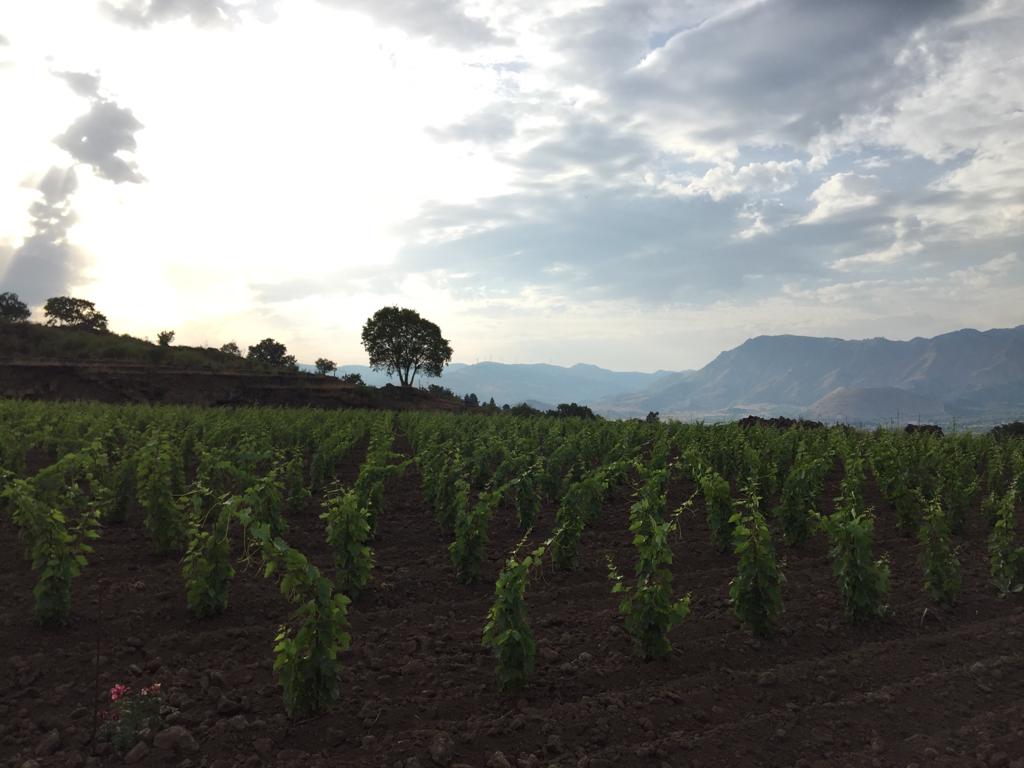
Over time, as their reputation grew, the demand for their wines increased and their small garage winery became too small. In addition, in 2019-20, they also bought ‘new’ old vines and added new vineyards. “So, in 2020 we decided to build a 400 sq m large new cellar not far from our vineyards where we can also host the many wine enthusiasts and visitors who would like to visit us.” While the new winery and tasting room will only be ready for visitors later in the year owing to the pandemic, the Vecchio focus will always remain on small production and family ownership, Rosa insists. Their clientele remains niche, engaged wine lovers with a focused interest in boutique wineries and indigenous grapes.
Climate change and Etna
Climate change has not spared Etna, and harvest is earlier of late. “We have seen major changes in the last 10 years,’ says Rosa, “In 2017, we harvested white grapes in August, as temperatures rose to over 36 degrees C and we were worried we might lose our vines in the heat. This year it was the opposite – ripening is steady and we are happy.”
The uncertainty of climate change notwithstanding, Rosa is excited about a special project they are nurturing: in 2020 they hand-harvested and de-stemmed their Nerello Mascalese, fermenting it with 5% white grapes, using ambient yeast and only free-run juice. “We are waiting to see how this wine develops,” she says, smiling.
“To us, it is but yet another piece that we will add to our extraordinary parable of work and life here on Etna, where we have had the privilege of being born, and we hope to stay in to raise our vines, our project, our daughters.”
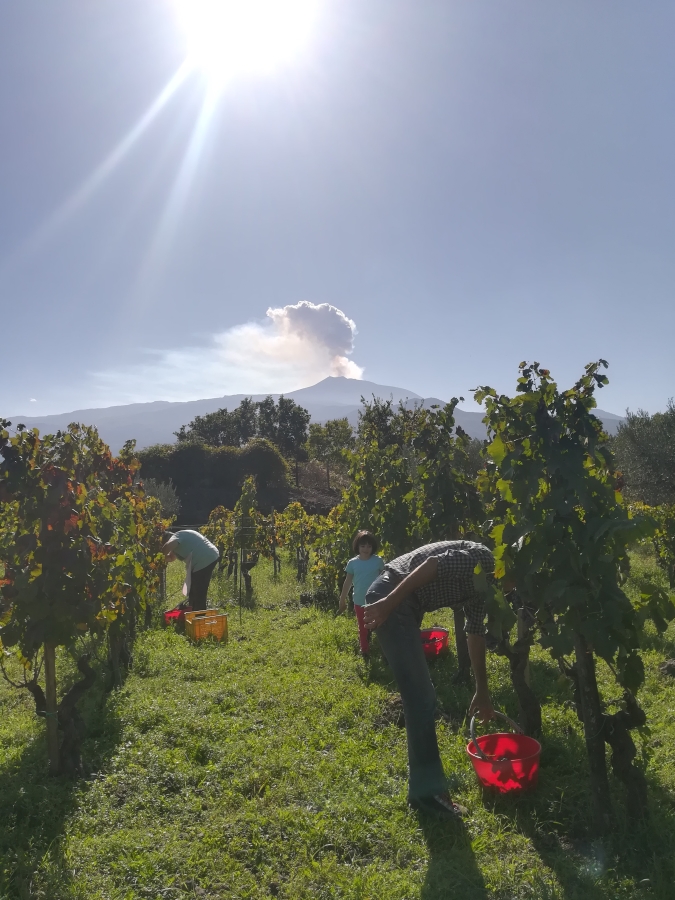
Contact: https://www.facebook.com/vignetivecchio
Vigneti Vecchio wines are distributed in Australia, Canada, Denmark, France, Japan, UK, Italy, Russia, USA
——————————————————————————————————————
Main DOCs of Mount Etna:
Etna Rosso: minimum 80% Nerello Mascalese, maximum 20% Nerello Cappuccio
Etna Bianco: minimum 60% Carricante
Etna also has an appellation for rose (Etna Rosato) and sparkling wine (Etna Spumante)
Other top Etna producers with wines to look out for:
- Tenuta delle Terre Nere
http://www.tenutaterrenere.com/en/index.php - Passopisciaro – Andrea Francetti
https://www.vinifranchetti.com/passopisciaro/winemaking-on-mt-etna - Benanti winery
https://www.benanti.it/en - Tasca d’Almerita
https://www.tascadalmerita.it/en/estate/tascante - Graci wines
https://www.bbr.com/producer-1844-graci-sicily

